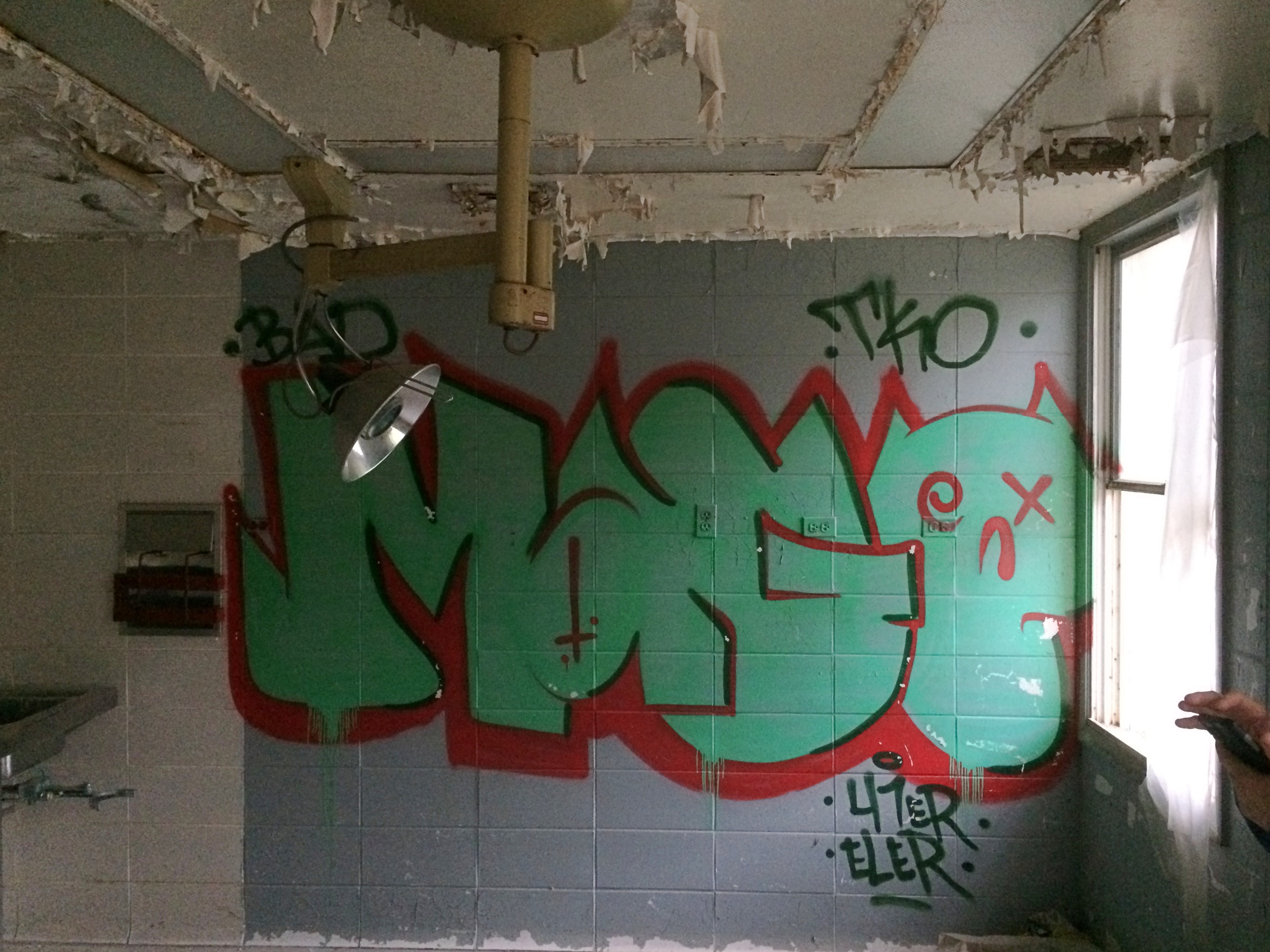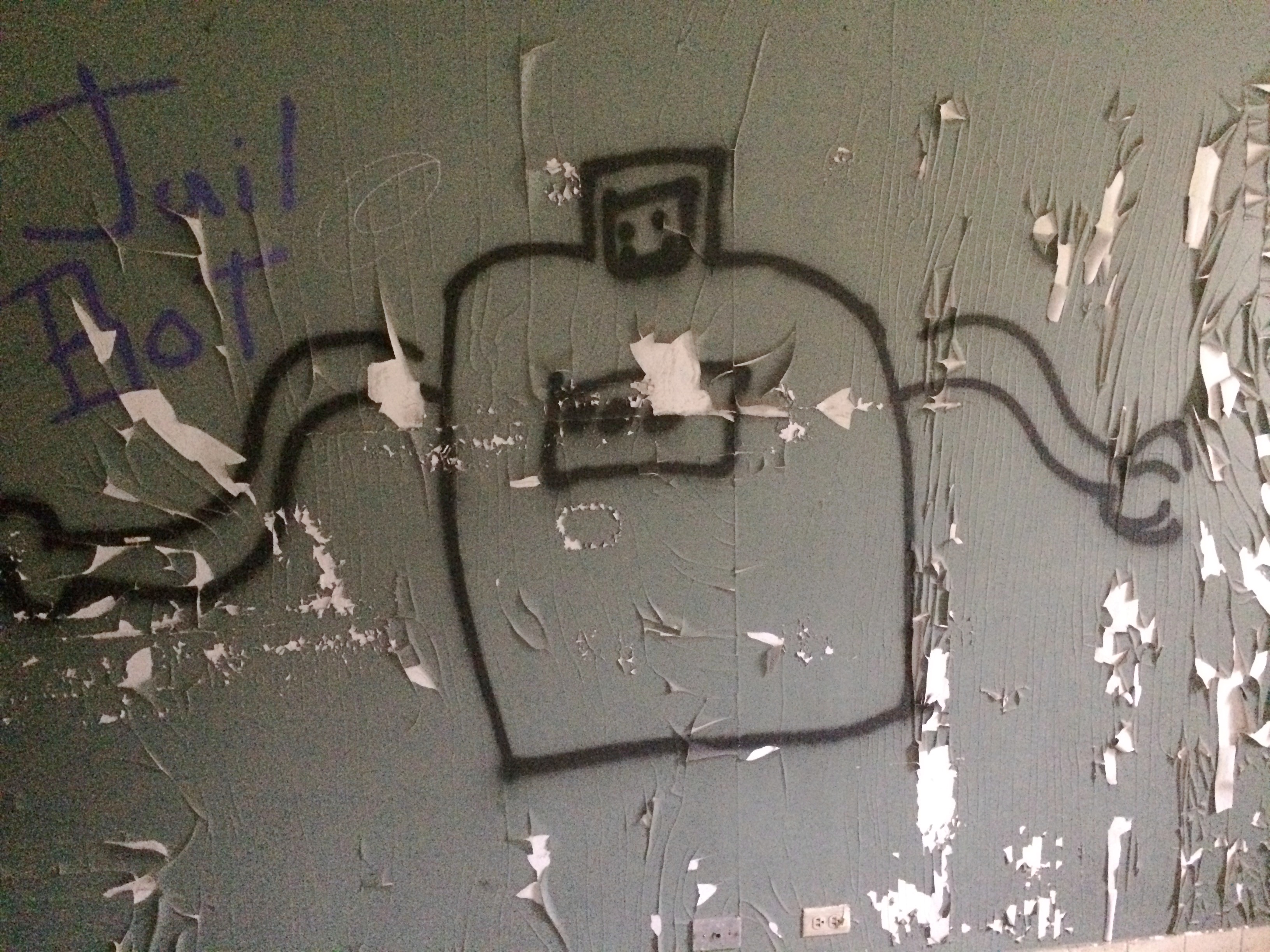Though it’s interesting, we didn’t go to Joliet on Sunday just to see the Joliet Area Historical Museum. The drive’s a bit far for that. About a year ago, I read that the museum had started offering tours of the former Joliet Correctional Center, which closed in 2002. I knew I wanted to do that, and so Ann and I went.
These days the site is called the Old Joliet Prison — a much better name. As you look at the massive stone walls and guard towers and the barb-wire residuum, no weasel word like “correctional” will do. It was a prison.
The tour groups meet in front of the former prison’s administrative building. Convict labor built the prison in the 1850s, with a design by W.W. Boyington, who also designed the Chicago Water Tower.
 It’s also the site of the 1915 murder of Odette Allen, wife of the prison’s warden, a story that the guide told us almost at once. Blunt force to her head, body set on fire in her room, a young black inmate fingered for the crime but not executed because there was too much doubt about his guilt, though he spent the rest of his life in the prison. Later I read about the incident, as relayed here.
It’s also the site of the 1915 murder of Odette Allen, wife of the prison’s warden, a story that the guide told us almost at once. Blunt force to her head, body set on fire in her room, a young black inmate fingered for the crime but not executed because there was too much doubt about his guilt, though he spent the rest of his life in the prison. Later I read about the incident, as relayed here.
One curious detail to the story (I thought): “That afternoon, [Warden Edmund] Allen bought his wife a $3,000 diamond ring. He was going to present it to her that evening at dinner.”
That’s an insanely expensive ring, about $76,000 in current money. Allen was independently wealthy? Maybe running a large state prison had its graft opportunities in the early 20th century. This is Illinois we’re talking about, after all. But enough to buy that kind of rock for his wife?
Anyway, the former administrative building hasn’t been stabilized yet, so we had to enter the grounds through one of the prison’s sally ports.
 Almost immediately after our entrance, heavy rain started to fall. The tour leader took us into some of the few structures open to visitors, in hopes that the rain would slack off.
Almost immediately after our entrance, heavy rain started to fall. The tour leader took us into some of the few structures open to visitors, in hopes that the rain would slack off.
So we got to see some solitary confinement cells, with the only light from windows and cell phones.
 Along with the former prison hospital and its abandoned equipment.
Along with the former prison hospital and its abandoned equipment.
 The prison has been closed for 17 years. In the early years of its abandonment, the place was pretty much no man’s land, prone to looting, arson and vandalism. Graffiti relics of those days are still visible.
The prison has been closed for 17 years. In the early years of its abandonment, the place was pretty much no man’s land, prone to looting, arson and vandalism. Graffiti relics of those days are still visible.

 The rain kept coming.
The rain kept coming.
 Soon thunder and lightning started. Since much of the tour is outdoors — most of the buildings are still unsafe — that meant the tour had to be cancelled. In a few moments of lighter rain, we all left the way we had come. I got a few pictures of the wet grounds as we exited.
Soon thunder and lightning started. Since much of the tour is outdoors — most of the buildings are still unsafe — that meant the tour had to be cancelled. In a few moments of lighter rain, we all left the way we had come. I got a few pictures of the wet grounds as we exited.



 We can re-schedule at no extra charge at a later time. I figure that might be October, when it certainly won’t be hot, and the risk of thunderstorms is a little less.
We can re-schedule at no extra charge at a later time. I figure that might be October, when it certainly won’t be hot, and the risk of thunderstorms is a little less.

